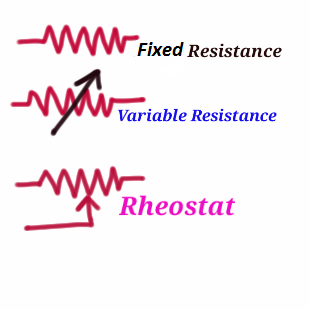Resistance: Resistance of a conductor is the opposition offered by the conductor to the flow of current through it.
Resistances are of two type fixed resistance and variable resistance.
Reason of resistance: The resistance is due to collision of moving electrons while moving from negative terminal to positive terminal. In this process when electrons collide with positive ions , few electrons drift away and do not reach to the positive terminal. Because of this drifted electrons the conductance of the conductor decreases and therefore resistance results in this process.
Conductance = 1 / resistance
Rt=R0 ( 1+ α t) ohm.
where t = Tt – T 0
Where Rt = Resistance at temperature t 0C
R0 = Resistance at temperature 00C
α = temperature Co-efficient of resistance of a particular conductor.
| Temperature Co-efficients (α) | ||
| Conductor Material | Temp. Co-efficent | Unit | Copper | 4.041 x 10-3 | Ohm-m |
| Aluminium | 4.308 x 10-3 | Ohm-m |
Resistance formula from the relation of potential difference and current is given below.
Resistance = Potential difference / Current
R = V / I VA-1
This unit VA-1 is named as Ohm.
From the power equation we can write the resistance formula as
R = W / I2

